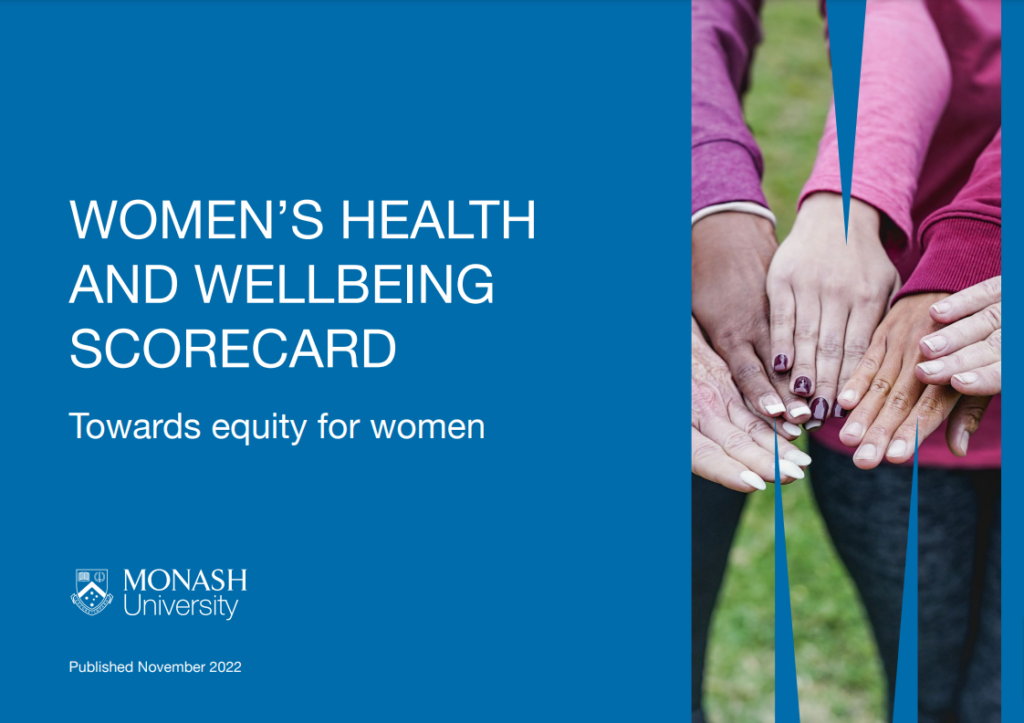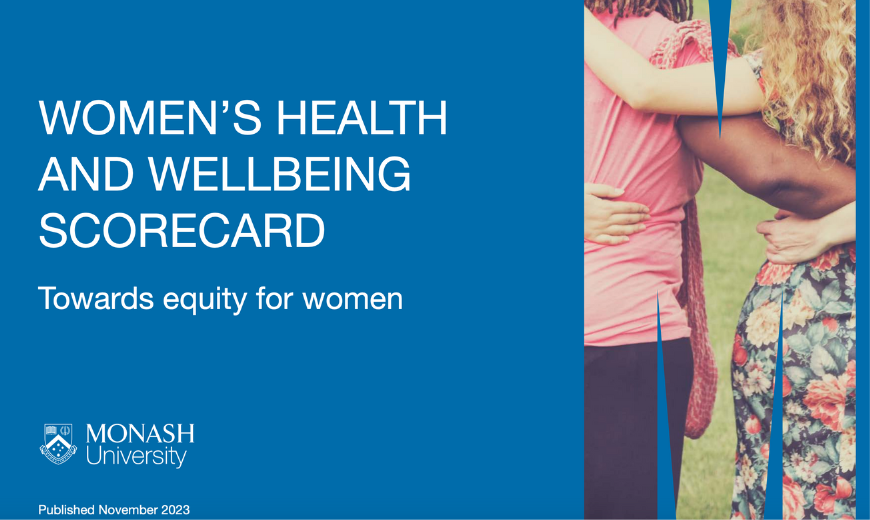Women's Health & Wellbeing Scorecard
Women have lower income, less engagement in the labour force, lower superannuation and poorer health. This inequality costs $55 billion in lost GDP.
Financial gap for women in 2021:
- 21% gap in full-time employment
- Annual income difference of $23,885
- Retirement savings shortfall of $44,746
Psychological distress
More women than men have reported elevated levels of psychological distress. During the first year of the COVID pandemic, there was a sharp rise in psychological distress among women aged 18-24 and 25-34.
Women aged 18-24 consistently reported the highest levels of distress across all years. Women aged 55-64 experienced a significant shift in reported psychological distress moving from the lowest levels in 2001, up to the second highest by 2018 and remained high in 2020/21. A sharp rise in mental disorders in young women is also confirmed by the 2020-2022 National Study of Mental Health and Wellbeing.
The data underscores a concerning trend: young women, particularly those aged 18-24, are facing heightened levels of distress with a very high prevalence at a population level. We must respond immediately and prioritise their health and wellbeing.
This report highlights key health and wellbeing indicators where women have poorer outcomes compared to men — this should not be the status quo.
Summary of wellbeing indicators
Over two decades, there was a positive shift: more women found fulltime jobs and fewer faced unemployment or lived in poverty. However, the percentage of women living in both income poverty and with multidimensional poverty has increased after 2020.
In 2021, despite some advancements, a gender disparity still existed. Fewer women were in full-time roles,more were out of the workforce, and more experienced both income and combined poverty. The only equal ground with men was in the unemployment rate.
Key findings of the 2023 report:
- While women’s economic status remained sadly static, the report shines a light on the significant surge in psychological distress among young women aged 18 to 34.
- This increase wasn’t sudden – distress levels in this group began escalating as early as 2018. Thus, the pronounced rise in 2020-21 built on an already elevated baseline.
- Even though this trend in young women’s distress wasn’t unforeseen, the extent, breadth and severity are alarming.
- The conspicuous lack of acknowledgment, and even more troubling, the absence of a response, echoes Baldwin’s words: “Nothing can be changed until it is faced.”
- Our challenge now is to confront and work together to eliminate gendered disadvantage, including the alarming levels of distress in our young women, that has to date remained unnoticed and unaddressed.
- Further, this unmooring of consequence from causality arguably perpetuates misogynistic narratives that frame women as the “weaker” sex, and isolates young women from the help and support they need and deserve.
- Most importantly, we appear to be failing a generation of our young women.
Overall, the Women’s Health and Wellbeing Scorecard found economic indicators for women were improving but that a gender gap remains for all indicators except unemployment.t
It will take:
- 50 years to achieve equality in full-time employment.
- Over 200 years to close the income gap between men and women.
The 2023 Women’s Health and Wellbeing Scorecard focused on 2020/21 which, marked by global upheaval due to COVID-19, witnessed significant social unrest with over 110,000 taking to the streets to protest the treatment of women in Australia. In tandem, there was a concerning dip to 50th in the World Economic Forum Global Gender Gap index. The Australian Bureau of Statistics data from the Household, Income and Labour Dynamics in Australia (HILDA) and National Health Surveys confirms these gender disparities, highlighting these enduring challenges.
Concerningly, in all domains except one, more women reported experiencing poor health. Most alarmingly in this report is the dramatic rise in psychological distress among young women aged 18-34. This pronounced surge underscores the gravity of this issue and necessitates targeted interventions and comprehensive support mechanisms.
However, 2023 heralds a glimmer of hope. Australia’s ascension from 50th to 26th in the Global Gender Gap Report 2023, driven by decisive political actions, positions us for transformative change. As we reflect upon the pandemic’s initial year, this report’s significance is accentuated, underscoring the imperative for immediate, impactful action.
Experts
2022 Scorecard
2023 Scorecard
Articles in the media:
- ABC (2022) Decades apart, Yumi and Ellie share a story – one that links them to millions of Australian women
- ABC News video (2022) Psychological distress in women increases over last decade
- The Guardian (2022) Australian women will need ‘more than 200 years’ to reach income equity with men
- Herald Sun (2022) Women’s distress ‘incredibly high
- Medical Journal of Australia Insight+ (2022) Women’s health scorecard highlights need for institute
- Monash Lens (2023) How are Australian women scoring on health wealth and wellbeing
- Monash Lens (2023) Climbing the ranks – Australia’s gender equity breakthrough
- CEDA (2022) The gender wealth gap is a critical barrier to Australia’s economic growth
- Monash Lens (2022) Mental Health Scare: Women falling through the cracks
- Monash Lens (2022) Women’s reverse wealth trajectory leads to poverty in older age
Funding for this work is from the National Health and Medical Research Council (NHMRC), Monash Partners Academic Health Sciences Centre and Equity Trustees.


